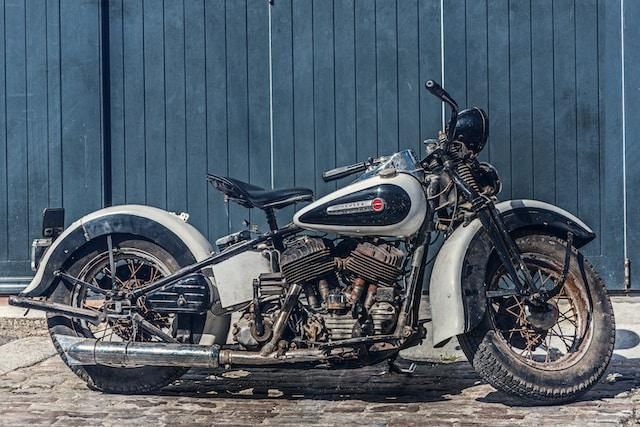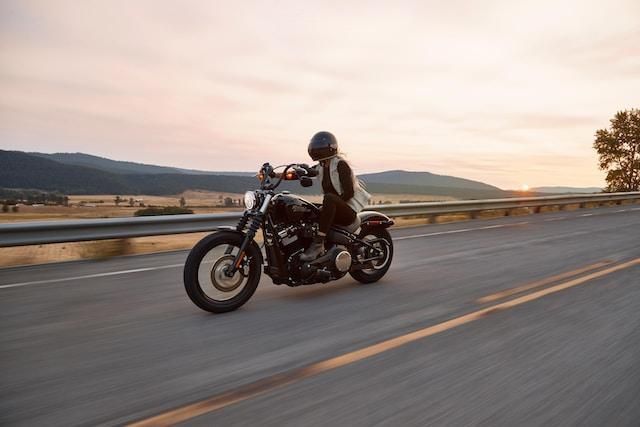
What is Considered High Mileage for a Motorcycle
What is Considered High Mileage for a Motorcycle
High mileage for a motorcycle is quite different from that of a car. What is considered high mileage for a motorcycle? High mileage for a motorcycle depends on a couple of factors such as the type of the bike, its usage and maintenance, and its condition. High numbers on the odometer should not discourage you from buying an excellent motorcycle. For a used motorcycle you should focus on how well the motorcycle is maintained.
This article will talk about what is considered high mileage for a motorcycle, and what are the other factors that influence the bike's value and longevity. Should you buy a motorcycle that has a lot of miles?
What is High Mileage for a Motorcycle?
Different aspects determine how many miles are a lot of miles for a motorcycle. For smaller pre-owned sports bikes, high motorcycle mileage could be somewhere around 20,000 to 30,000 miles. But a larger pre-owned bike is considered to have high motorcycle mileage when it has driven around for approximately 50,000 miles. Most motorcycles are believed to have reached their old age after 50,000 miles, however, this does not mean that it has reached its end, or has completed its lifespan.
Why Does Mileage Matters?
Miles on a motorcycle give a rough estimate of its overall condition. This in turn helps in determining the value of a pre-owned motorcycle. While mileage is an important factor, it is not the only element that needs to be considered. Many collectors have owned motorcycles that have run 100,000 miles, or more. The condition of a motorcycle depends more on the personality of the previous owner. A bike that has been subject to regular maintenance with more miles on it, is way better than a bike with fewer miles but infrequent and lapsed maintenance.
Why is High Mileage Important for a Motorcycle?
Mileage on a motorcycle might not be a deciding factor, however, it does give you a fundamental understanding of the condition of its engine. High mileage is a negative indicator when the bike you are looking at is missing service records or has changed hands often. Similarly, it's not a great sign if you look at a bike with high miles that was ridden by a new driver.
Why is it Important to Consider the Previous Owner of the Bike
Properly breaking in the bike is a big part of ensuring its longevity over time. Breaking in is the first 1,000 to 12,00 miles on a new bike. Regardless of the readings on the odometer, you need to know the history of the bike you intend to buy. Even though 50,000 miles seems like a high number for a bike (considering it's equivalent to 200k on a car), if the bike is well-cared for it could still be a smart buy.
Consequences of Buying or Selling a High-Mileage Bike
If you are a high-mileage bike seller, the only reason that will keep you from selling it at a good price is the condition of your motorcycle. Serious bikers know a steal deal when they see one. If you have a well-maintained motorcycle with all the service records available you will sooner or later find a buyer who will appreciate the deal.
If you are a buyer who wants to purchase an older bike with more miles on it then it is recommended that you go for a motorcycle that is well-maintained with all the service records available with the owner. Another benefit of buying a high-mileage motorcycle is that its insurance costs would be significantly lower than a newer bike.
How Many Miles is A Lot for a Motorcycle?

Depending on the type, brand, and size a motorcycle will have varying lifespan; this means that what is high mileage for one bike can be normal miles for another. Some of the seasoned bikers have reported their beloved bikes running for 100,000+ miles. This only proves that a well-kept bike can last for many years with fewer mechanical problems.
A motorcycle can last anywhere between 20,000 to 100,000 miles, which is quite a large disparity. This disparity in the mileage is due to a couple of factors, on top of the list are maintenance and driver's habits. A dirt bike, for example, usually won't last more than 20,000 miles. Whereas, a well-maintained sports bike can last up to 100,000 miles and beyond, and some brands of touring motorcycles can go beyond 100,000 miles as well. But again, this is not a figure set in stone.
The Range of Mileage that Can be Considered High for Different Types
A well-kept bike can last for many years, with relatively few mechanical problems. The average high mileage also fluctuates with different motorcycle types and brands.
Here is a look at the estimated high mileage for different types of motorcycles:
- Cruiser bikes: 40,000 - 50,000 miles
- Touring bikes: 40,000 - 50,000 (If taken care of, can reach up to 100,000 miles)
- Sports bikes: 25,000 - 50,000 miles (due to extreme conditions)
- Off-road bikes: about 20,000 miles
- Dual-purpose or adventure bikes: 75,000 miles
Here is the estimated high mileage of different motorcycle brands.
- Honda: 150,000 miles
- Yamaha: 75,000 - 100,000 miles
- Triumph: more than 100,000 miles
- Ducati: 80,000 - 100,000 miles
- Suzuki: 70,000 - 100,000 miles
- Harley Davidson: more than 100,000 miles
What Factors Can Affect the Lifespan of a Motorcycle?
Following are given some of the factors that can affect the lifespan of a motorcycle.

1. The engine
Any motorcycle engine can survive a long time if it is well-maintained and operated with care. However, bigger engines are produced for performance, while smaller-size engines are created for accessibility and efficiency, therefore a modest engine's lifespan will be drastically shortened if it is pushed as hard as a superbike.
2. Riding habits
The riding habits of a motorcyclist determine the longevity of its engine and the high mileage capacity of the bike. A road racer who rides aggressively and regularly peaks RPMs is overloading and overstressing the engine of his/her bike. On the other hand, a careful driver who complies with the manufacturers' recommendations, is contributing towards the longevity of the engine.
3. Maintenance and care
The lifespan of a motorcycle is determined by how well you maintain it. Regularly following the owner's manual servicing plan will have a major impact on your bike's lifespan. Even two identical year model motorcycles vary significantly in terms of performance and mileage if the owners have different attitudes towards maintenance. Clearly, a bike that is well taken care of will last longer than a bike that is used roughly without following the due maintenance schedule.
The regular maintenance schedule of your motorcycle includes all the thorough checks and lubrications described in your owner's manual, as well as regular oil changes after extended use.
4. Cooling method
The engine life can be expanded by being aware of the subtleties of the cooling phase. Motorbike engines that are air-cooled live longer than those that are liquid-cooled. Consider this, you are stuck in traffic and you need to cool off your engine immediately. In this scenario, if you have an air-cooled motorcycle model you can turn the engine off instead of idling it without ventilation. In the case of a liquid-cooled motorcycle, your motorcycle will receive the same cooling bath whether you are traveling at a fast or at moderate speed.
How Long Do Motorcycles Last?

Depending on the amount of wear and tear, riding habits, and the amount of regular care and maintenance, a motorcycle can last from 4 years to 40 years. There is no such thing as an average lifespan for a bike, you may be surprised to hear about vintage motorcycles (20+ years old) costing a lot more than a bike that is no older than 5 to 8 years.
What to Expect from Your Motorcycle: Maintenance and Replacement
The lifespan of a bicycle relies not only on your bike's quality and your personal habits but also on several outside factors, including how often it gets used and how well it is maintained. Let's have a look at different factors affecting the overall lifespan of your motorcycle.
Budget for the Manufacturer & Care of Your Bike
Repairs and maintenance are one of the biggest factors affecting the lifespan of a motorcycle. High-quality bike repair or maintenance will cost a certain amount of money. Bigger costs can be avoided by taking regular care, but you should never compromise on the quality of repairs. A cheap bicycle with flimsy materials will need a new replacement quickly.
Cleaning and Covering
Your motorcycle needs routine cleaning and servicing. If you neglect to clean it regularly, the parts will wear out quickly, they might even break altogether, leading to a shorter life. Therefore, it is recommended to clean your bike and keep it covered as much as possible.
Travel distance and Wear & Tear
The average lifespan of a new bike frequently traveled on long distances can be up to 4 years. If used for short distances, then the vehicle could go for as long as 30 years.
Rocks, dirt, and grime can damage your bicycle, especially if not handled and dealt with quickly. If your bike has no cracks or broken parts, it will probably last for many years.
If the bike was used for racing and was exposed to harsh weather conditions, the frame may deteriorate faster than normal.
Tips for Increasing Motorcycle Lifespan
You can make your motorcycle last long by adopting three basic practices:
1. The importance of regular maintenance cannot be stressed enough. Regular oil and brake checks, wheels and chain maintenance, and replacement when needed are just a couple of things that need to be done regularly.
2. Adapt safe riding practices; make sure that you understand the power of your bike's engine and ride your motorcycle accordingly. Bikes that are frequently driven on longer routes should be subjected to more frequent maintenance and service trips.
When you will search for what is considered high mileage for a motorcycle, you will come across different answers. Some bikes might last for a couple of years, others will go for decades and only increase in value as they turn vintage. However, while exploring the answers to the question "How many miles do motorcycles last?" one thing is a constant; a motorcycle that is well maintained and taken care of will surely last longer than a motorcycle that is carelessly kept. From regular bike checkups to storing it in a covered garage, repairing broken parts with genuine good quality ones is the way to keep your bike running for a long time.
Updated